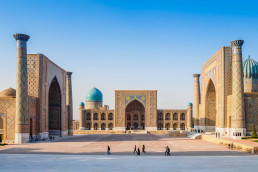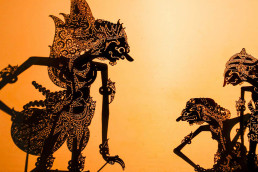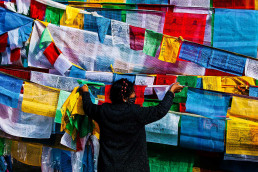Amelia Earhart : The Sky’s No Limit for Women
Amelia Earhart, an aviation pioneer and renowned novelist, was born on July 24, 1897, in Atchison, Kansas. She created history by becoming the first woman to fly alone across the Atlantic Ocean. Her strange disappearance in 1937 while trying a globe flight remains unsolved.
Earhart’s sense of adventure was evident from an early age. After working as a nurse’s aide for the Red Cross in Toronto during World War I, she took her first flight in California in 1920, sparking her interest in aviation. She purchased her first aircraft, a Kinner Airster, in 1921, and received her pilot’s licence two years later.
She established numerous aviation records. In 1922, she was the first woman to fly alone above 14,000 feet. In 1932, she became the first woman and the second person after Charles Lindbergh to fly solo across the Atlantic Ocean. She also made history as the first person to fly solo from Hawaii to the United States mainland.
She is a symbol of empowerment since she defied traditional expectations and broke down boundaries in a male-dominated sector. Her tenacity and determination have encouraged numerous women to pursue their aspirations, no matter what challenges they confront. She demonstrated that women can achieve everything they set their minds to, and her legacy continues to inspire women worldwide to strive for equality and prosperity.
Earhart’s influence extended beyond her achievements to flying. She used her platform to campaign for women’s rights and equality, becoming a role model for women and girls worldwide. Her life and accomplishments show that with courage, determination, and hard work, women can accomplish great things and contribute significantly to society.
In recent news, there have been apparent breakthroughs in the enigma surrounding Earhart’s disappearance. Deep-sea investigators using an autonomous underwater drone have found a place where they believe Earhart’s plane could be. The discovery was made possible by sonar imaging, which revealed an anomaly like a small aircraft at a depth of around 16,000 feet in the Pacific Ocean. Deep Sea Vision, an ocean exploration business, intends to examine the area further. This discovery has the potential to finally settle one of history’s most enduring riddles.
The Audacious Reign of Ratu Kalinyamat
Queen Kalinyamat, also known as Ratna Kencana, was a formidable queen in the 16th century, ruling the Javanese Islamic empire of Kalinyamat and Jepara. Her reign, which lasted from around 1549 to 1579, was distinguished by daring naval expeditions against Portuguese Malacca.
Born into royalty, she was the daughter of Sultan Trenggana of Demak and the wife of Sultan Hadlirin. Her accession to the kingdom followed the assassination of her brother, Sunan Prawoto, and her husband by Arya Penangsang. Despite the unfortunate circumstances, Ratu Kalinyamat proved to be a capable and courageous leader.
Ratu Kalinyamat’s reign was distinguished by her overseas campaigns in 1550 and 1574 against the Portuguese in Malacca. Her bravery and strategic brilliance earned her the acclaim of the Portuguese historical record “Da Asia,” which referred to her as ‘the Queen of Jepara,’ a wealthy woman with much influence.
However, her rule was not without dispute. According to several historical records, her character was perceived positively as well as negatively. While she was seen as a courageous and forceful leader, she was also connected with qualities of sensuality and ambition.
Despite the controversy, Queen Kalinyamat’s legacy is undeniable. Joko Widodo posthumously gave her the title of National Hero of Indonesia on November 10, 2023. This accolade reflected her substantial achievements to her kingdom and people.
However, the decision to recognize her as a national hero was not without criticism. Some detractors say that her vigorous attacks against the Portuguese were motivated by personal ambition rather than a desire to safeguard her people. Despite these concerns, many people still see Queen Kalinyamat as a symbol of women’s independence.
The narrative of Queen Kalinyamat is a complicated tapestry of power, ambition, and controversy. Her rule had an everlasting impact on the history of Jepara and the surrounding region. Today, she is remembered as both a queen and a national hero, demonstrating her enduring legacy.
Whether viewed as a heroine or a controversial character, Queen Kalinyamat was undeniably a woman of immense influence and authority. Her story serves as a reminder of history’s complex and often contentious character, where heroes are not always perfect and controversy may occasionally eclipse accomplishment.
Fasting Frenzy: The Places with the Most Extreme Ramadan Fasts
As the holy month of Ramadan enters the Islamic calendar, Muslims around the world start on a spiritual journey of fasting from dusk til dawn. This ritual, known as ‘Sawm,’ is one of Islam’s Five Pillars and is deeply revered. However, the length of fasting varies widely across the globe due to regional variances, resulting in some remarkable extremes.
Fasting periods in the world’s far north, such as Greenland and Iceland, can last up to 17 hours. This is owing to the tilt of the Earth and the sun’s position, which causes longer daylight hours during the summer months. In extreme northern locations such as Longyearbyen in Norway, where the sun does not set from April 20 to August 22, religious judgments have been made requiring Muslims to fast according to the fasting times of Mecca, Saudi Arabia, or the next Muslim country.
In contrast, Muslims in the world’s southernmost countries, such as New Zealand, Chile, and Argentina, fast for approximately 12 hours. This is owing to the decreased daylight hours observed in certain regions during Ramadan.
Fasting times are inextricably related to the lunar Hijri calendar, which is dependent on the moon’s phases. This calendar is made up of 29 or 30-day months, making it 11 days shorter than the solar year. As a result, Ramadan starts 10 to 12 days earlier every year. This shifting cycle means that Ramadan will be observed twice in 2030.
Fasting begins approximately eight hours after the last meal. The fast comprises abstaining from eating, drinking, smoking, and sexual intercourse during daylight hours in order to increase “taqwa,” or God-consciousness. Suhoor is the pre-dawn meal to begin the daily fast, and breaking one’s fast after sunset is called Iftar.
The practice of fasting during Ramadan demonstrates the great diversity and adaptation of Islamic traditions around the globe. Whether it’s a quick 12-hour fast in the southern hemisphere or a long 17-hour fast in the north, the spirit of Ramadan brings Muslims all around the world together in a shared experience of faith, patience, and endurance.
As we wonder at the geographical extremes of fasting, we are reminded of the universal ideals that Ramadan represents: empathy, self-discipline, and a sense of community. Regardless of the length of the day, the essence of Ramadan stays constant, brightening the lives of millions of people worldwide.
Sebastiao Salgado: The Man Who Photographed The World
Born in Aimorés, Brazil in 1944, Sebastião Salgado studied economics before switching to photography in 1973. His economic experience was put to use at the World Bank before his photographic adventure brought him to Magnum Photos in 1979. He started Amazonas Images alongside his wife, Lélia. Over the course of his five-decade career, he has visited over 120 nations, photographing major moments and concerns.
He is known for his striking black and white compositions, which combine creative talent with a strong sense of social and environmental responsibility. His widely regarded paintings, including “The Other Americas,” “Sahel,” “Workers,” “Migrations,” and “Genesis,” provide detailed record of human life and our planet’s delicate state. He has received multiple accolades for his contributions to photography, including the W. Eugene Smith Grant, the Royal Photographic Society Centenary Medal, and the Sony World Photography accolades’ Outstanding Contribution to Photography honour. In addition to his photography, Salgado is a UNICEF Goodwill Ambassador and a member of France’s Académie des Beaux-Arts.

Salgado’s corpus of work is distinguished by his dedication to long-term, self-initiated undertakings that include much research and writing. With a strong sense of humanity, he investigates issues such as poverty, migration, labour, human rights, and ecology, appreciating worldwide cultural diversity while pushing for environmental conservation.
I have a way to photograph. You work with space, you have a camera, you have a frame, and then a fraction of a second. It’s very instinctive. What you do is a fraction of a second, it’s there and it’s not there. But in this fraction of a second comes your past, comes your future, comes your relation with people, comes your ideology, comes your hate, comes your love – all together in this fraction of a second, it materializes there.
Sebastiao Salgado
His influence goes beyond photography, shaping the perspectives of other artists and sparking critical debates on global issues. He actively supports efforts to better people’s lives and safeguard ecosystems, particularly through the Instituto Terra, which he and his wife founded in 1998 to restore Brazil’s Atlantic Forest.

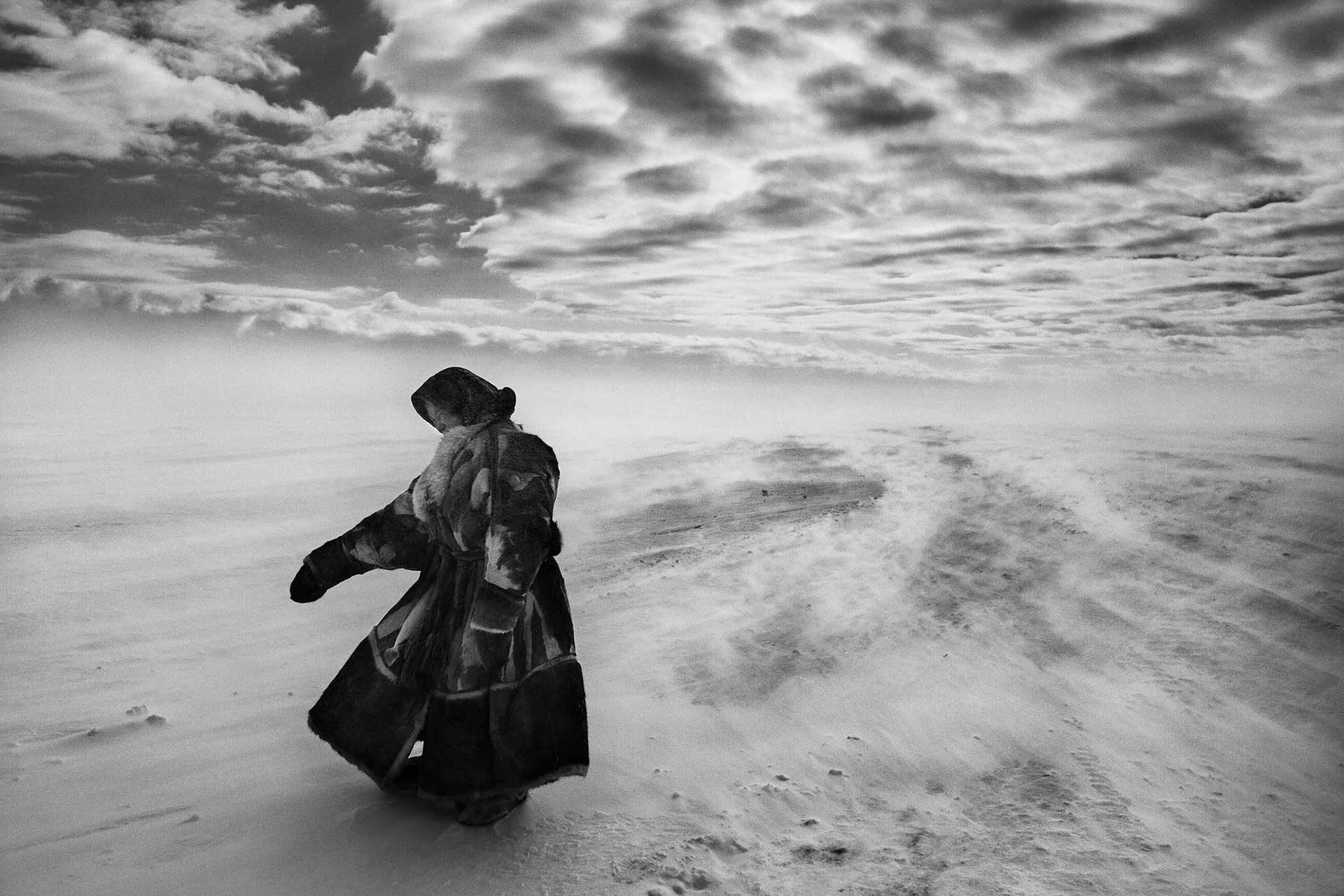 Although Salgado has retired from active fieldwork, his passion for storytelling endures. He currently spends his time collecting his huge database of over 500,000 photographs, ready to share his life’s work with the world. He continues to take part in exhibitions and partnerships, such as the Sony World Photography Awards 2024 in London and a project with the Wende Museum in Los Angeles, all with a focus on capturing the Amazon jungle.
Although Salgado has retired from active fieldwork, his passion for storytelling endures. He currently spends his time collecting his huge database of over 500,000 photographs, ready to share his life’s work with the world. He continues to take part in exhibitions and partnerships, such as the Sony World Photography Awards 2024 in London and a project with the Wende Museum in Los Angeles, all with a focus on capturing the Amazon jungle.
In reflecting on his legacy, Salgado expresses thanks for his diverse life experiences. He sees his work as more than just a portrayal of the globe; it is a monument to the beauty and hardships that humanity faces. He hopes that his images will serve as a compelling reminder to future generations of the critical need to safeguard and preserve our world.
Tracing the Path of Rembrandt's Night Watch
In the heart of Amsterdam’s Rijksmuseum lies a masterpiece that has captivated audiences for centuries – Rembrandt van Rijn’s iconic painting, “Night Watch.” This monumental work of art, completed in 1642 during the Dutch Golden Age, continues to bewitch viewers with its enigmatic composition and unparalleled mastery. Delving into the historical and cultural trails surrounding this revered painting unveils a tapestry of intrigue, illuminating the rich heritage of both Rembrandt and the vibrant city that birthed him.
A Glimpse into the Past
The Dutch Golden Age, spanning the 17th century, marked a pinnacle of economic prosperity, artistic innovation, and cultural flourishing in the Netherlands. Amsterdam emerged as a bustling hub of commerce, fueled by maritime trade and colonial expansion. It was within this dynamic milieu that Rembrandt, hailed as one of the greatest painters in European history, created his magnum opus, “Night Watch.”
Commissioned by Captain Frans Banning Cocq and his militia company, the painting originally bore the title “The Company of Captain Frans Banning Cocq and Lieutenant Willem van Ruytenburch.” However, its darkened varnish over the centuries led to its misleading moniker, “Night Watch.” Despite its misnomer, the painting’s allure lies not only in its aesthetic brilliance but also in the vivid narrative it conveys.
Unraveling the Composition
At first glance, “Night Watch” exudes a sense of dynamism and theatricality, as if frozen in a moment of frenetic action. Rembrandt’s masterful use of chiaroscuro, a technique of contrasting light and shadow, imbues the scene with an atmospheric intensity, drawing the viewer into its midst. The central figures of Captain Cocq and Lieutenant van Ruytenburch command attention, their faces illuminated amidst the swirling chaos of musketeers and officers.
Yet, upon closer inspection, subtle details emerge, revealing layers of symbolism and storytelling woven into the fabric of the painting. The interplay of light and shadow not only accentuates the protagonists but also shrouds certain figures in obscurity, inviting speculation about their identities and motives. Rembrandt’s meticulous attention to detail, from the intricate ruffles of clothing to the gleam of weaponry, breathes life into each individual depicted, evoking a palpable sense of tension and anticipation.
Cultural Significance
“Night Watch” transcends its historical context to become a timeless emblem of Dutch identity and resilience. In the aftermath of the Eighty Years’ War against Spanish rule, the Dutch Republic emerged as a beacon of republican values and civic pride. Captain Cocq’s militia company, depicted in the painting, symbolizes the spirit of communal solidarity and civic duty that defined Dutch society during this period.
Moreover, “Night Watch” serves as a testament to Rembrandt’s unparalleled genius and innovative spirit. His bold departure from conventional portraiture and his bold experimentation with light and composition revolutionized the artistic landscape of the Dutch Golden Age, leaving an indelible mark on subsequent generations of artists.
The Journey Continues
As visitors flock to the Rijksmuseum to behold “Night Watch” in all its glory, the painting continues to spark curiosity and wonder, inviting audiences to embark on a journey through time and space. From the bustling streets of 17th-century Amsterdam to the hallowed halls of a modern museum, Rembrandt’s masterpiece serves as a bridge between past and present, uniting generations in a shared appreciation of artistic excellence and cultural heritage.
In the end, “Night Watch” transcends its status as a mere painting to become a cultural touchstone, a beacon of inspiration that illuminates the human experience with its timeless beauty and profound depth. In the words of Rembrandt himself, “Choose only one master—Nature.” And indeed, in “Night Watch,” nature, history, and art converge in a symphony of brilliance that continues to resonate with audiences around the world.
Behind the Enigmatic Lens of Vivian Maier
In the annals of photographic history, a name emerges, shrouded in mystery yet illuminated by the brilliance of her captured moments – Vivian Maier. Born in the bustling metropolis of New York City in 1926, Maier’s life unfolded as a tapestry of enigmatic hues, her story as captivating as the images she left behind. Like an undiscovered constellation in the vast expanse of the cosmos, her work emerged from obscurity, leaving the world spellbound by its raw beauty and unfiltered authenticity.
Maier’s journey into the realm of photography began as an unassuming pursuit, a humble hobby interwoven into the fabric of her daily life. For decades, she served as a nanny, traversing the bustling streets of Chicago with her trusty Rolleiflex camera in hand, her lens serving as a silent observer of the human condition. Little did the world know that within the confines of her unassuming persona lay a treasure trove of photographic brilliance waiting to be unearthed.
It wasn’t until 2007, two years prior to her passing, that Maier’s photographic legacy was thrust into the limelight. A serendipitous discovery by amateur historian John Maloof, who stumbled upon a trove of her undeveloped film negatives at a local auction, ignited a spark that would illuminate Maier’s path to posthumous acclaim. What emerged from the depths of anonymity was a body of work unparalleled in its breadth and depth, a testament to Maier’s unparalleled eye for composition and her uncanny ability to capture the essence of life in all its myriad forms.
Maier’s photography transcends the constraints of time and space, offering a poignant window into the soul of mid-20th century America. Her subjects, ranging from the destitute denizens of the urban landscape to the serene scenes of suburban life, reflect a keen sense of empathy and compassion. Through her lens, she immortalized moments of quiet introspection and fleeting joy, each frame a testament to the indomitable human spirit’s resilience in the face of adversity.
What sets Maier apart from her contemporaries is not merely the sheer volume of her work but also the striking intimacy with which she approached her subjects. Unlike many street photographers of her time, Maier eschewed the role of the detached observer, instead immersing herself fully in the lives of those she photographed. This intimacy is palpable in the hauntingly evocative portraits that populate her oeuvre, each one a testament to the profound connection she forged with her subjects.
Yet, for all the acclaim that Maier’s work has garnered in the years since its discovery, the woman behind the lens remains a tantalizing enigma. Much of her life remains shrouded in mystery, her motivations and innermost thoughts lost to the passage of time. Was she a reluctant artist, content to let her work speak for itself? Or was photography simply a means of coping with the tumultuous currents of her own life?
As we delve deeper into the labyrinthine corridors of Maier’s psyche, one thing becomes abundantly clear – her legacy is as enduring as it is enigmatic. In a world increasingly inundated with digital ephemera, her photographs serve as a poignant reminder of the power of the human gaze to transcend the limitations of time and space. Like a silent witness to the passage of history, Maier’s work continues to inspire and captivate, inviting us to ponder the timeless mysteries of the human experience.
The Miaz Brothers' Journey Through the Veil of Reality
In the ever-evolving realm of contemporary art, where boundaries are continually pushed and perceptions challenged, the enigmatic duo known as the Miaz Brothers stand as pioneers of a unique genre within the world of photography. Their work transcends conventional definitions, blurring the lines between reality and imagination, leaving viewers entranced by the ethereal beauty of their creations.
Hailing from Milan, Italy, the Miaz Brothers, Roberto and Renato, have garnered international acclaim for their mesmerizing portraits that defy traditional techniques and perceptions of visual art. Their journey into the world of photography began as a quest to capture the essence of human emotion and the transient nature of existence. However, what sets them apart is their unorthodox approach to the medium, utilizing a technique they have coined as “blurism.”
At first glance, their portraits appear to be veiled in a haze, with subjects seemingly emerging from the depths of memory or dreams. Yet, upon closer inspection, one realizes that this effect is not achieved through digital manipulation or post-processing trickery, but rather through meticulous application of spray paint onto canvas. The result is a hauntingly beautiful fusion of photography and painting, where the boundaries between the two dissolve, leaving behind a narrative that is at once familiar and otherworldly.
The Miaz Brothers draw inspiration from a myriad of sources, ranging from classical portraiture to contemporary street art. Their work is a testament to the power of collaboration, as they seamlessly blend their individual visions to create a singular, cohesive aesthetic. Each portrait tells a story, inviting viewers to embark on a journey of self-discovery and introspection.
One of the most striking aspects of the Miaz Brothers’ work is their ability to evoke a sense of timelessness. Their portraits transcend temporal boundaries, existing in a realm where past, present, and future converge. In doing so, they challenge the viewer to reconsider their preconceived notions of reality and perception, prompting a deeper exploration of the human psyche.
In recent years, the Miaz Brothers have expanded their artistic repertoire beyond traditional portraiture, exploring themes of identity, memory, and cultural heritage. Their installations have graced galleries and museums around the world, captivating audiences with their haunting beauty and thought-provoking concepts.
Despite their growing international acclaim, the Miaz Brothers remain humble and grounded, viewing their work as a reflection of the collective human experience. Through their art, they seek to foster empathy, understanding, and connection in an increasingly fragmented world.
As we navigate the complexities of the modern age, the Miaz Brothers serve as beacons of inspiration, reminding us of the boundless potential of the human spirit. Theirs is a journey of exploration and discovery, a testament to the enduring power of creativity to transcend barriers and unite us all in a shared celebration of beauty and wonder. In a world filled with noise and chaos, their art speaks volumes, whispering truths that resonate across time and space.
Wisdom and Prophecy of The Legendary King Jayabaya
In the heart of Indonesia lies a land where history whispers through the dense jungles and ancient ruins. This is the realm of King Jayabaya, a figure both mythical and historical, whose legacy intertwines with the rich tapestry of Indonesian culture. From the mist-shrouded peaks of Java to the bustling streets of modern Jakarta, the story of King Jayabaya resonates through time, beckoning travelers to uncover the secrets of a bygone era.
The Legend of Jayabaya
Legend has it that Jayabaya, whose name means “victorious” or “successful,” ruled the ancient Javanese kingdom of Kediri in the 12th century. His reign is steeped in myth and prophecy, with tales of his wisdom, justice, and mystical powers spreading far and wide. It is said that he possessed the ability to foresee the future, a gift bestowed upon him by the gods.
One of the most famous prophecies attributed to King Jayabaya is the “Jayabaya Book” (Kitab Jayabaya), a collection of verses that purportedly predict the rise and fall of kingdoms, the coming of Islam to Java, and even the arrival of colonial powers. Whether these prophecies are the product of later interpretations or genuine insights into the future remains a subject of debate among historians and scholars.
Today, traces of King Jayabaya’s legacy can still be found scattered across Java, serving as waypoints on a historical and cultural trail that winds through the island’s landscapes and communities.
Temples and Palaces
In the ancient city of Kediri, remnants of Jayabaya’s kingdom endure in the form of temples, palaces, and archaeological sites. The ruins of Penataran Temple, once the grand center of Kediri’s religious life, stand as a testament to the region’s rich history. Carved reliefs depict scenes from Javanese mythology and daily life, offering a glimpse into the world that Jayabaya ruled over.
Throughout Java, sacred sites associated with King Jayabaya draw pilgrims and seekers in search of spiritual enlightenment. From Mount Lawu, where Jayabaya is said to have meditated in a cave, to the mystical springs of Gunung Kelud, where his presence is believed to linger, these places hold a special significance for those who believe in the king’s divine connection.
Cultural Traditions
Jayabaya’s influence extends beyond the realm of politics and religion, shaping the cultural landscape of Java in profound ways. His legacy lives on in the vibrant traditions of Javanese dance, music, and literature, where tales of his wisdom and foresight are celebrated through performance and storytelling.
Despite centuries of scholarly inquiry and archaeological exploration, many mysteries surrounding King Jayabaya remain unresolved. Historians continue to debate the extent of his reign, the accuracy of his prophecies, and even his very existence. Yet, it is perhaps the enigmatic nature of Jayabaya’s legacy that adds to its allure, inviting us to delve deeper into the past in search of answers.
The Jayabaya Book
Also known as Jangka Jayabaya, this collection of verses covers a wide range of topics, including the rise and fall of kingdoms, the arrival of Islam in Java, and the coming of foreign powers. Some of the key themes and predictions include:
Jayabaya is said to have foreseen the rise and fall of various dynasties, both in Java and beyond. His prophecies often describe the characteristics of future rulers and the fates of their kingdoms, offering insights into the cyclical nature of power and governance.
One of the central themes of the prophecies is the spread of Islam in Java. Jayabaya is believed to have predicted the conversion of the Javanese people to Islam and the decline of indigenous belief systems. These prophecies reflect the historical process of Islamization in Southeast Asia and its profound impact on Javanese culture.
Foreign Invasions
The Jayabaya Book contains references to foreign powers invading Java and exerting influence over the region. These prophecies often describe the arrival of European colonizers, such as the Dutch, and the challenges they pose to indigenous rulers and traditions.
In addition to political and social upheaval, the prophecies also touch upon natural disasters and environmental changes. Jayabaya is said to have predicted volcanic eruptions, earthquakes, and other cataclysmic events, underscoring the interconnectedness of human destiny and the natural world.
Interpretations and Legacy
Over the centuries, the prophecies of King Jayabaya have been subject to various interpretations and reinterpretations, shaping popular beliefs and cultural practices. Some view Jayabaya as a visionary ruler whose insights into the future offer guidance and wisdom to subsequent generations. Others see him as a mythical figure whose prophecies reflect the hopes, fears, and aspirations of the Javanese people.
Regardless of their historical accuracy, the prophecies of Jayabaya continue to resonate with Indonesians today, serving as a source of inspiration, reflection, and cultural identity. They remind us of the enduring power of storytelling and the ways in which myths and legends shape our understanding of the past and present.
In exploring the prophecies of King Jayabaya, we are invited to delve deeper into the complexities of history, belief, and human experience, confronting questions of destiny, agency, and the nature of reality itself. Whether we choose to interpret these prophecies as literal predictions or symbolic narratives, their significance lies in their ability to spark dialogue, provoke thought, and illuminate the mysteries of the human condition.
As we follow in the footsteps of King Jayabaya, we embark on a journey not only through time and space but also through the complexities of culture, belief, and human experience. Along the way, we may uncover fragments of history and glimpses of truth, but the true essence of Jayabaya’s legacy eludes us, like a whisper carried on the wind, hinting at secrets yet to be revealed.
In the end, the story of King Jayabaya transcends the confines of history books and archaeological sites, weaving its way into the fabric of Indonesian identity and imagination. Whether he was a mythical hero, a wise ruler, or simply a figment of collective imagination, the legacy of Jayabaya endures, inspiring us to explore the mysteries of the past and embrace the richness of our cultural heritage.
Whispers in the Wind: The Tale of Tibetan Prayer Flags
High in the Himalayan mountains, amidst the thin, crisp air and panoramic vistas, a centuries-old tradition flutters in the wind, weaving stories of spirituality, culture, and tradition. Tibetan prayer flags, with their vibrant colors and ethereal movements, serve as more than just decorative pieces; they are embodiments of a profound cultural legacy, carrying prayers, mantras, and wishes across the vast expanse of the Tibetan plateau and beyond.
Origins and Significance
The origin of Tibetan prayer flags can be traced back over a millennium to ancient Bon traditions, pre-dating Buddhism in Tibet. Originally, they were used in rituals to appease elemental spirits and deities, with the flags acting as conduits for prayers and mantras. When Buddhism began to flourish in Tibet, these flags seamlessly integrated into its spiritual landscape, evolving to carry Buddhist symbols, prayers, and teachings.
The Symbolism of Colors
The five colors adorning traditional Tibetan prayer flags hold deep symbolic significance:
- Blue represents the sky and space, embodying wisdom and clarity.
- White symbolizes air and wind, signifying pure intentions and the path to enlightenment.
- Red symbolizes fire, representing the life force, transformation, and compassion.
- Green embodies water, symbolizing harmony, balance, and growth.
- Represents the earth, symbolizing groundedness, stability, and the foundations of life.
Together, these colors form a harmonious balance, reflecting the interconnectedness of all aspects of existence.
Craftsmanship and Ritual
Crafting Tibetan prayer flags is an art form passed down through generations, often performed by skilled artisans within Tibetan communities. Traditionally made from natural materials such as cotton, these flags are meticulously printed with prayers, mantras, and auspicious symbols using woodblocks or hand-carved stamps. The process is imbued with reverence and spiritual intention, with each flag believed to carry the energy of the prayers inscribed upon it.
Once crafted, the flags undergo a ritual purification ceremony, often involving chanting, incense, and offerings. This ceremony infuses the flags with spiritual potency, preparing them for their sacred purpose.
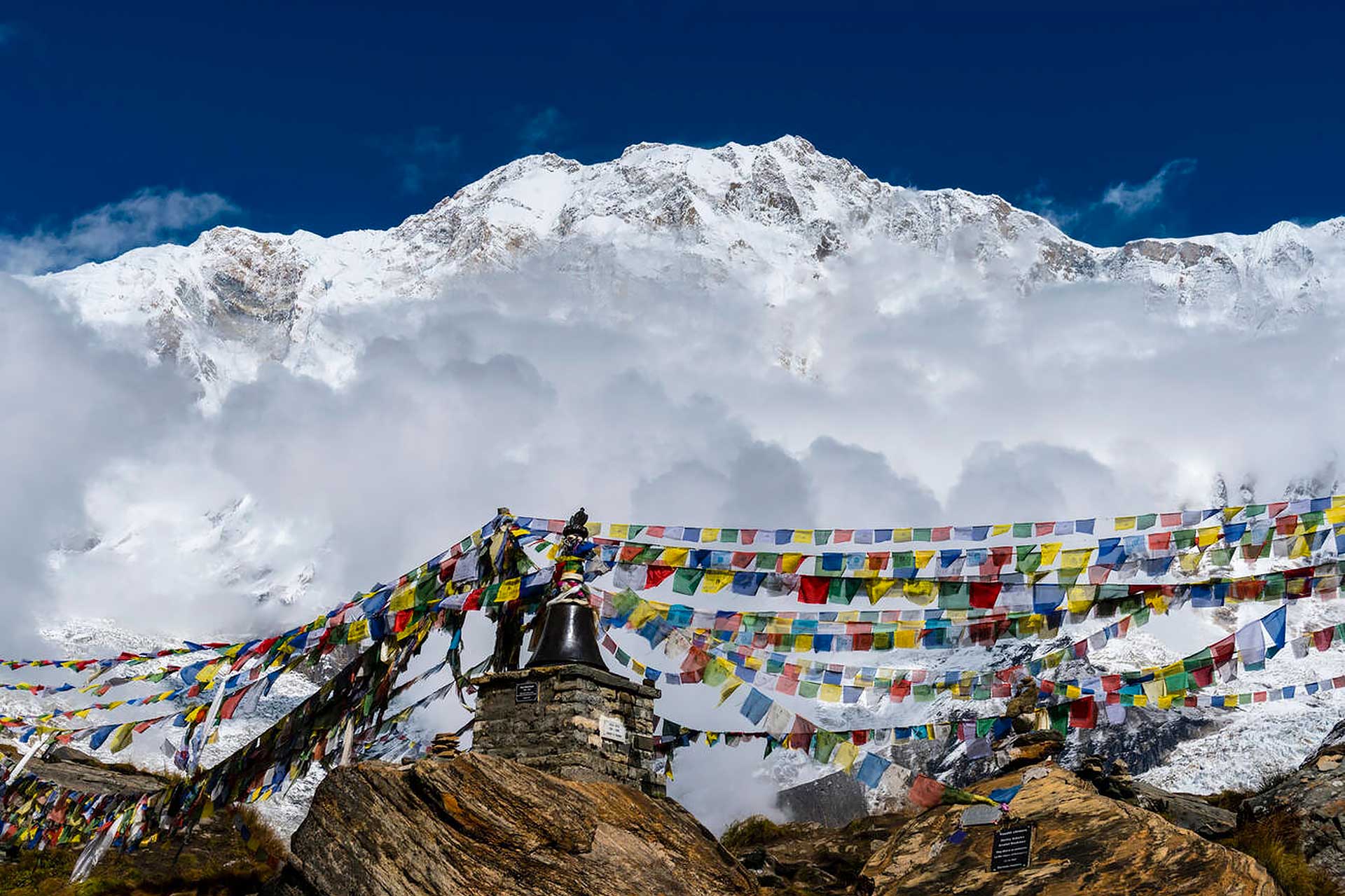 Cultural Trailblazers
Cultural Trailblazers
Beyond their spiritual significance, Tibetan prayer flags serve as cultural ambassadors, embodying the essence of Tibetan identity and resilience. As nomadic herders and traders traversed the rugged terrain of the Himalayas, prayer flags adorned their tents, yaks, and caravans, spreading blessings and protection along their journeys.
In contemporary times, Tibetan prayer flags have transcended geographical boundaries, becoming iconic symbols of peace, compassion, and solidarity. From mountain passes in the Himalayas to urban landscapes around the world, these colorful banners serve as reminders of the interconnectedness of humanity and the universal quest for inner peace and enlightenment.
Environmental Harmony
The ephemeral nature of Tibetan prayer flags reflects the impermanence of existence, as they gradually weather and fade over time. Far from being a sign of neglect, this gradual deterioration is embraced as a natural part of the cycle of life, death, and rebirth.
Moreover, the materials used in crafting traditional prayer flags are eco-friendly, ensuring minimal environmental impact. Unlike synthetic materials that contribute to pollution, Tibetan prayer flags are biodegradable, returning to the earth from which they were sourced.
Tibetan prayer flags stand as testament to the enduring spiritual heritage of Tibet, embodying the timeless wisdom and compassion of its people. Beyond mere symbols, they serve as conduits for peace, healing, and enlightenment, connecting individuals across cultures and continents in a shared journey towards collective harmony.
As they dance in the wind, Tibetan prayer flags invite us to pause, reflect, and contemplate the profound interconnectedness of all beings. In their fluttering cadence, they whisper timeless truths, reminding us that, ultimately, we are all threads in the intricate tapestry of existence, bound together by the common threads of compassion, wisdom, and love.
Immersed in Heritage of Bhaktapur's Enchanting Past
Nestled in the Kathmandu Valley of Nepal lies a hidden gem of ancient allure and cultural richness – Bhaktapur. As I wandered through its labyrinthine streets, I felt transported back in time, immersed in a world where tradition and history intertwine seamlessly. In this National Geographic-style narrative, I invite you to embark on a journey with me through the enchanting city of Bhaktapur.
A Tapestry of Time
Stepping into Bhaktapur is like entering a living museum, where every corner tells a story of centuries past. The city’s origins can be traced back to the 9th century, when it was established as a kingdom of its own. Over the centuries, Bhaktapur flourished as a center of art, architecture, and trade, attracting artisans and craftsmen from far and wide. The ancient streets, lined with intricately carved buildings and bustling marketplaces, offer a glimpse into the rich tapestry of Nepal’s cultural heritage.
Strolling Through Durbar Square
My first stop in Bhaktapur was the iconic Durbar Square, a UNESCO World Heritage Site and the heart of the city. As I walked through the square, I was captivated by the intricate carvings adorning the temples and palaces that surrounded me. Each structure seemed to whisper tales of dynasties long gone, of kings and queens who once ruled these lands. From the majestic Nyatapola Temple to the intricately carved Palace of Fifty-Five Windows, Durbar Square is a testament to the architectural prowess of the Newar artisans who crafted these masterpieces centuries ago.
The Art of Pottery
One of Bhaktapur’s most famous traditions is its pottery-making, a craft that has been passed down through generations. I visited the Pottery Square, where I watched in awe as skilled artisans molded clay into beautiful works of art, using techniques that have remained unchanged for centuries. The air was filled with the rhythmic tapping of hands against clay, a symphony of craftsmanship that echoed through the narrow streets. From traditional water pots to ornate vases, the pottery of Bhaktapur is a testament to the skill and ingenuity of its artisans.
A Taste of Tradition
No visit to Bhaktapur would be complete without sampling its culinary delights. I indulged in local delicacies such as bara, a savory lentil pancake, and juju dhau, a creamy yogurt that is said to have been enjoyed by royalty in ancient times. Each bite was a revelation, a fusion of flavors that spoke to the city’s rich culinary heritage. From street food stalls to family-run eateries, Bhaktapur offers a culinary adventure like no other, where every meal is a celebration of tradition and flavor.
The Living Goddess
As I wandered through the streets of Bhaktapur, I had the rare opportunity to catch a glimpse of the living goddess, Kumari. Chosen from a young age, Kumari is worshipped as the embodiment of divine feminine energy. I watched in awe as she was carried through the streets in a palanquin, her serene presence casting a spell over all who beheld her. The tradition of the living goddess is just one of the many ancient rituals that continue to thrive in Bhaktapur, a testament to the city’s deep spiritual heritage.
Preserving the Past
While Bhaktapur is a city steeped in history, it is also a place where tradition meets modernity. As I explored its streets, I was struck by the juxtaposition of ancient temples and bustling markets with modern cafes and shops. Yet, amidst the rapid pace of change, there is a concerted effort to preserve Bhaktapur’s cultural heritage, ensuring that future generations will be able to experience its timeless beauty. From restoration projects to cultural preservation initiatives, the people of Bhaktapur are dedicated to safeguarding their heritage for generations to come.
A Journey of Discovery
My time in Bhaktapur was a journey of discovery, a voyage through a world where the past and present collide in a kaleidoscope of sights, sounds, and sensations. As I bid farewell to this enchanting city, I carried with me memories that will last a lifetime – memories of a place where time stands still, and history comes alive at every turn. In the tapestry of Nepal’s cultural landscape, Bhaktapur shines like a precious gem, a testament to the enduring spirit of a civilization that has stood the test of time. And as I reflect on my travels, I am filled with a sense of gratitude for having had the opportunity to experience its wonders firsthand. Bhaktapur is more than just a destination – it is a journey into the heart and soul of Nepal, a place where the past and present converge in a timeless dance of beauty and grace.

